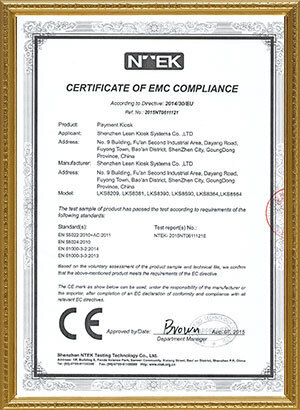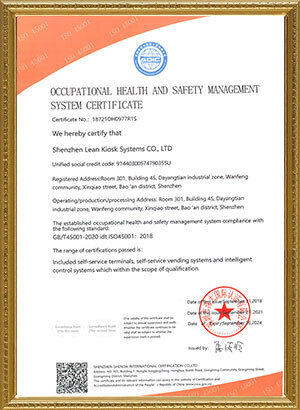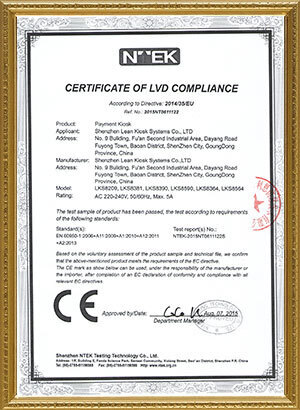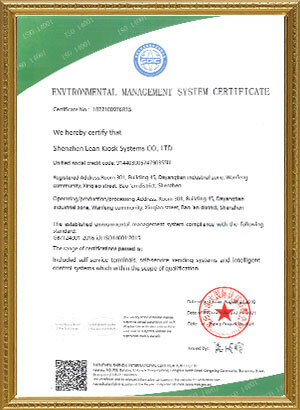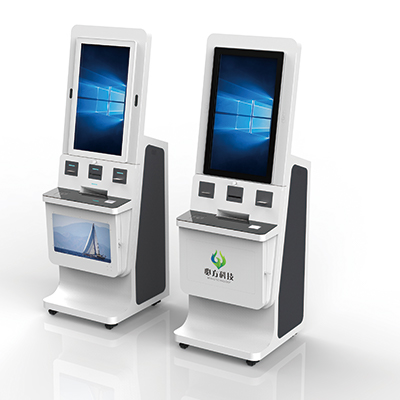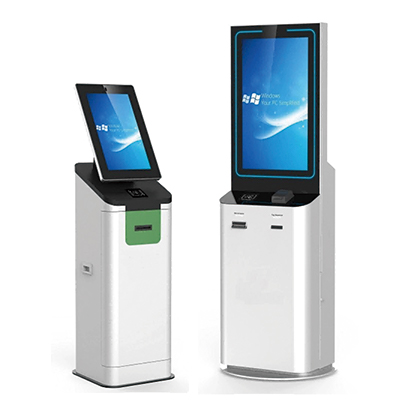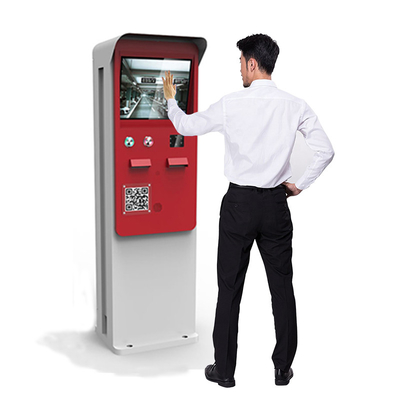





self service kiosk
What is a self-service kiosk?
A self-serve kiosk is an interactive touchscreen device that allows customers to buy products or services without the help of a staff member. It includes both hardware and software components that make it possible for customers to browse items, to place orders, and to pay independently.
How to build a self-service kiosk?
How to Plan a Self-Service Kiosk Deployment
Assessing Business Needs and Objectives.
Choosing the Right Self-Service Kiosk Solution.
Planning the Deployment Process.
Designing the User Experience.
Implementing the Self-Service Kiosk Deployment.
Measuring Success and Iterating.
Case Studies and Examples.
How do self-order kiosks work?
These automated machines allow customers to place their orders via touch screen and pay for them without waiting in line or interacting with a human cashier. Sometimes, these kiosks may also provide customized order options or recommendations based on the customer's preferences.
What are the disadvantages of self-service kiosks?
Technical issues. Like any technology, self-ordering kiosks are prone to technical glitches and malfunctions, which can disrupt operations and frustrate customers. For example, a malfunctioning touchscreen or payment processing error can lead to delays and negatively impact the customer experience.
What is the difference between a kiosk and a POS system?
POS kiosks are an all-in-one system. The point of sale software that helps a business accept transactions is installed into a kiosk. The kiosk is a terminal hardware where a customer can then place their own orders, buy their own tickets, or check out at a store by themselves without a cashier.
What is a common use self-service kiosk?
Common-use self-service or CUSS is a shared kiosk offering airport check-in to passengers without the need for ground staff.
How does self-service kiosk work at airport?
The kiosk will prompt you to identify yourself by inserting a credit card, typing in your flight confirmation code (locator number) or entering your frequent flyer number. Enter your identifying information using the touch screen. You will be able to touch a “clear” or “backspace” key if you make a mistake.
What is the advantage of self kiosk?
Self-service kiosks can help you improve customer satisfaction by reducing wait times, increasing convenience, and providing a more personalized experience. Here are some of the specific advantages of self-service kiosks for customer satisfaction: Convenience and time-saving benefits of self-service technology.
What is an example of a self-service kiosk?
Ordering Kiosk: Ordering kiosks is one of the prime examples of self-service technology, particularly in the food service industry. These interactive terminals allow customers to browse menus, customize their orders, and make payments without cashier assistance.
What is the objective of self-service kiosk?
A self-service kiosk is an interactive tablet or touchscreen computer that allows a customer to access information or services without directly interacting with a person. Implementing self-service kiosks can allow a business to scale operations more quickly and efficiently while at the same time reducing costs.
How does McDonald's self-service kiosk work?
The kiosks utilize touchscreen technology, which is familiar to most people and requires minimal effort to operate. Customers can simply tap or swipe on the screen to make selections, similar to using a smartphone or tablet
When did self-service kiosks start?
1977The first interactive kiosk, as we know them today, was developed in 1977 by Murray Lappe. He was a pre-med student at the University of Illinois at Urbana-Champaign. He called it “The Plato Hotline”, and it was used for informational purposes at the university.
What is the purpose of a self-service kiosk?
The purpose of self-service kiosks is to allow a customer to interact with a company, product, brand or service, and via automated means, without requiring additional personnel, like customer service agents.
How big is the self-service kiosk market?
MARKET INSIGHTS
The global self-service kiosk market size was valued at USD 26.45 billion in 2022 and is expected to reach USD 43.65 billion by 2028, growing at a CAGR of 8.71%. Businesses are adopting self-service kiosks to improve efficiency, enhance customer experience, and reduce operational costs.
Is self-service kiosk an application of AI?
The interactive self-service kiosks when integrated with AI (artificial intelligence) and ML (machine learning) become very smart and offer superior flexibility, customization, and adoptability which significantly reduce the cost in long-term.
What are the advantages of self-service kiosk in an airport?
With an airport kiosk, passengers can check in for their flights, print boarding passes, and even process luggage check-ins. These self-service kiosks aim to simplify the travel process, reducing wait times and increasing convenience for travelers
What are the disadvantages of self-service kiosks?
Technical issues. Like any technology, self-ordering kiosks are prone to technical glitches and malfunctions, which can disrupt operations and frustrate customers. For example, a malfunctioning touchscreen or payment processing error can lead to delays and negatively impact the customer experience.
What are the benefits of self-service?
Self-service is when customers can resolve an issue with a company on their own. This means more autonomy and speed in service. Understanding the concept in depth and creating solutions tailored to a business is critical for organizations to last in Industry 4.0.
How are self-service kiosks changing customer behavior?
Self-service kiosks are revolutionizing customer behavior in various sectors by providing convenience, empowerment, and engagement. With their influence on purchasing decisions, order accuracy, and satisfaction, self-service kiosks have become integral to modern business strategies.
What is the most successful example of self-service?
One of the most successful examples of self-service is the ATM, which revolutionized banking by allowing customers to perform transactions like withdrawals, deposits, and account inquiries without needing a bank teller. This innovation made banking more convenient and accessible, setting the standard for self-service technology.
How do self-order kiosks work?
These automated machines allow customers to place their orders via touch screen and pay for them without waiting in line or interacting with a human cashier. Sometimes, these kiosks may also provide customized order options or recommendations based on the customer's preferences.
What are self-service kiosks?
A self-serve kiosk is an interactive touchscreen device that allows customers to buy products or services without the help of a staff member. It includes both hardware and software components that make it possible for customers to browse items, to place orders, and to pay independently.
Why is self kiosk important?
Self-service kiosks are important because they enhance customer experience, reduce labor costs, increase revenue through upselling, provide valuable data for personalization, improve accuracy, enhance accessibility, reduce human error, and offer businesses adaptability and flexibility.
Why did McDonald's implement self-service kiosks?
With customers placing their orders through the kiosks, employees can be reallocated to other areas of the restaurant, such as food preparation or customer service. This redistribution of resources has improved productivity and allowed McDonald's to provide better service to its customers.
What type of technology is a self-service kiosk?
A self-service kiosk is an interactive tablet or touchscreen computer that allows a customer to access information or services without directly interacting with a person. Implementing self-service kiosks can allow a business to scale operations more quickly and efficiently while at the same time reducing costs.
How does self-service kiosk work at airport?
The kiosk will prompt you to identify yourself by inserting a credit card, typing in your flight confirmation code (locator number) or entering your frequent flyer number. Enter your identifying information using the touch screen. You will be able to touch a “clear” or “backspace” key if you make a mistake.
What are the statistics about self-service kiosks?
Research conducted in 2019, prior to the pandemic, found that 25% of customers were already using self-service kiosks (up 7% on 2018), with more than 65% saying they would visit a restaurant more often if they provided the option. Three in 10 even stated that they preferred ordering this way.
What is the purpose of self ordering kiosk?
A self-ordering kiosk is a self-service machine that empowers customers to make their own food orders directly at a touchscreen kiosk without the involvement of a restaurant cashier or waiter. Customers can customize their orders, make payments, and get receipts through the self-service kiosk.
What are the negatives of self-checkout?
Self-Service Checkout Cons. However, self checkout isn't without downsides. You may have an increased risk of theft or manipulating the transaction, as well as high upfront cost for equipment.
Why do customers prefer self-service?
Customers want their problems solved promptly and feel that searching for the answer themselves is quicker than contacting the company. Furthermore, self-service improves customer knowledge, as it allows them to resolve problems at their speed and learn as much or as little as they want.
What is an example of self-service in retail?
Self-checkout systems are a prime example of self-service technology in retail environments. These systems offer customers the option to scan, bag, and pay for their purchases independently without needing assistance from a cashier.
What is an example of a self-service model?
ATMs, as mentioned above, are an excellent example: the consumer can carry out a range of procedures on their own, without having to wait in line at a bank. However, these solutions form the foundation for electronic phone conversations, many apps, and modern chatbots.
How are self-service kiosks changing customer behavior?
Self-service kiosks are revolutionizing customer behavior in various sectors by providing convenience, empowerment, and engagement. With their influence on purchasing decisions, order accuracy, and satisfaction, self-service kiosks have become integral to modern business strategies.
What are the benefits of McDonald's self-service kiosk?
By streamlining the ordering process with a queue management solution, McDonald's self-service kiosks have eliminated long queues and reduced waiting times, allowing customers to enjoy their meals more quickly
How big is the self-service kiosk market?
MARKET INSIGHTS
The global self-service kiosk market size was valued at USD 26.45 billion in 2022 and is expected to reach USD 43.65 billion by 2028, growing at a CAGR of 8.71%. Businesses are adopting self-service kiosks to improve efficiency, enhance customer experience, and reduce operational costs.
Why did McDonald's implement self-service kiosks?
With customers placing their orders through the kiosks, employees can be reallocated to other areas of the restaurant, such as food preparation or customer service. This redistribution of resources has improved productivity and allowed McDonald's to provide better service to its customers.
What are the benefits of self-service customer support?
Efficient and effortless issue resolution
Self-service options pave the way for swift and seamless issue resolution. Customers can quickly locate answers to their questions and resolve issues without enduring hold times or engaging in lengthy conversations with support reps.
Why do people spend more money at self-ordering kiosks?
Well, self-service kiosk interfaces have been both carefully designed and incorporate sneaky psychological tricks to encourage consumers to spend more money. Really it boils down to two things, user design and user experience
Address: No. 99-15, Fuan intelligent manufacturing Industrial Park, Dayang Road, Fuhai Street, Baoan District, Shenzhen, China
- Tel:+852 59566712
- Email: frank@lien.cn
- Worktime:8:00-02:00
- Contact Person:Frank
- Mobile Site



